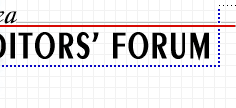
 |
|
||||||||
 |
Editorial Services Guide
By The Bay Area Editors' Forum
| Acquisitions editing | Indexing | Production editing |
| Copyediting | Information design | Project editing |
| Developmental editing | Page design | Proofreading |
| Fact checking | Permissions editing | Technical editing |
Definition: Page design
Page design determines the look of the printed or electronic page, in terms of the fonts, sizes, line lengths, leading, colors, and position of the type elements, as well as the arrangement of elements on the page (headings, text, boxes, photographs, illustrations, charts or tables, captions, and the like). It is critical for the designer to understand the target audience when creating the design.
Typically, the designer establishes a grid in which the elements are laid out and applies principles of contrast, repetition, alignment, and proximity to give elements the appropriate prominence and clarify their relationships for the reader or viewer. The process is used in designing books, brochures, periodicals, collateral pieces, exhibition signage, and other materials in page format. Design specifications are written to detail the choices made, so that other project participants can follow them. The designer may be required to copyfit on some projects. In addition, page designers often are involved in researching appropriate illustrations or photographs to enhance editorial content.
A page designer should know the major graphics programs: Quark, PhotoShop, Illustrator, and now InDesign, which is rapidly becoming popular among designers, although Quark continues to dominate in some publishing settings. If a page designer has some experience in page layout, it is a definite plus because understanding implementation issues can minimize clean-up in the latter stages of modern production.
While Web page design also requires market knowledge, there are differences in logistics, aesthetics, and technology between print and Web design. Web design includes a range of considerations related to interactive functions, hyperlinks, and onscreen viewing, while print design is a static and often enduring creation. If a Web site doesn't have positive "click-through" rates to indicate that visitors are following links into areas where visitor traffic is desired, the pages may be redesigned. Web design typically includes "usability testing" to ensure that the design and its interactive components are effective for, and make sense to, the intended audience.
home |
find the right editor |
membership |
about us
what do editors do? |
next forum |
forum index
editing resources |
contact us |
search
© 1997–2025 Bay Area Editors' Forum. All rights reserved.
~~ Responsive CSS (beta) ~~